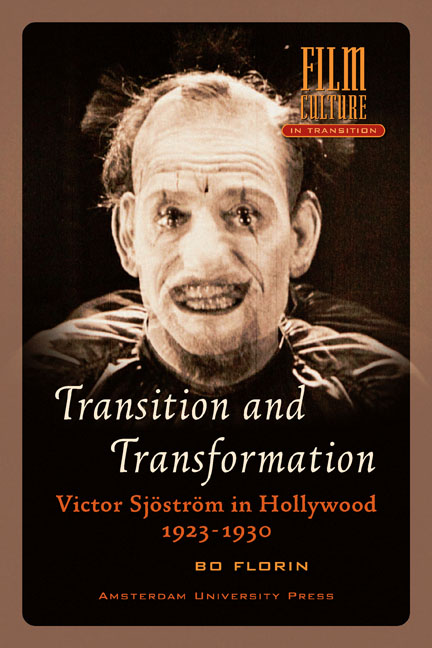Book contents
- Frontmatter
- Contents
- Acknowledgements
- Introduction – From Sjöström to Seastrom
- Sjöström – From National to International
- A European in Hollywood – NAME THE MAN and the Shift of Production Systems
- From Scientist to Clown – HE WHO GETS SLAPPED
- A for Adultery – THE SCARLET LETTER
- Conquering Nature – THE WIND
- Fragmented Pieces – Writing the History of the Lost Hollywood Films
- The Shadow of the Silents – A LADY TO LOVE
- The Genius and the System– Some Concluding Remarks
- Notes
- Bibliography
- Filmography
- Index
- Film Culture in Transition
A for Adultery – THE SCARLET LETTER
Published online by Cambridge University Press: 22 December 2020
- Frontmatter
- Contents
- Acknowledgements
- Introduction – From Sjöström to Seastrom
- Sjöström – From National to International
- A European in Hollywood – NAME THE MAN and the Shift of Production Systems
- From Scientist to Clown – HE WHO GETS SLAPPED
- A for Adultery – THE SCARLET LETTER
- Conquering Nature – THE WIND
- Fragmented Pieces – Writing the History of the Lost Hollywood Films
- The Shadow of the Silents – A LADY TO LOVE
- The Genius and the System– Some Concluding Remarks
- Notes
- Bibliography
- Filmography
- Index
- Film Culture in Transition
Summary
If HE WHO GETS SLAPPED represents to some extent an exception in Sjöström's American career (during which he was able to develop his auteur qualities in a unique way), THE SCARLET LETTER (1926) also brought forward certain specific aspects of his auteurism, perhaps most notably his “Swedish” quality as director. This fifth film in his career as a Hollywood director was based on the classic mid-nineteenth-century novel by Nathaniel Hawthorne and was scripted by Frances Marion. The year before Lillian Gish had been offered a contract by MGM that gave her the right to choose her own scripts as well as her director and paid her $800,000 for a maximum of six roles over two years. Gish had wanted to make The Scarlet Letter for some time. This had, however, not been possible as the Hays Office had put the film on an unofficial blacklist, in spite of the novel's status as a literary classic. But now MGM producer Irving Thalberg agreed to pursue Gish's choice for her next film, but only on condition that she promise to deal with the story properly. Her personal guarantee immediately led to the lifting of the ban by both women's committees and church groups, which had hitherto been strongly opposed to the making of the film.
In her dissertation Feeling Through the Eyes, a study of the films of Mary Pickford and Frances Marion, Anke Brouwers deals at length with THE SCARLET LETTER. She notes that this lift of the ban confirms Gish's symbolical status as “a moral woman of impeccable reputation”. Gish had already found the ideal Dimmesdale in Lars Hanson, whom she had seen and appreciated in his role in GÖSTA BERLING's SAGA (THE STORY OF GÖSTA BERLING, Mauritz Stiller1924 Her choice of Sjöström as director, according to general film history, “seemed perfectly suited to Nathaniel Hawthorne's story of love and retribution. His sense of landscape emerged even more strongly here.” In Lillian Gish's own words, however, the explanation was even simpler:
I wanted to make a film of The Scarlet Letter … I was asked which director I would like, and I chose Victor Sjostrom, who had arrived at MGM some years earlier from Sweden.
- Type
- Chapter
- Information
- Transition and TransformationVictor Sjöström in Hollywood 1923–1930, pp. 63 - 78Publisher: Amsterdam University PressPrint publication year: 2013



